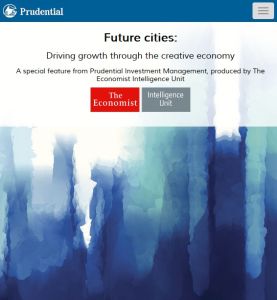Join getAbstract to access the summary!

Join getAbstract to access the summary!
The Economist Intelligence Unit
Future Cities
Driving Growth Through the Creative Economy
EIU, 2015
What's inside?
Music in Austin, art in Berlin, TV in Mexico City, film in Mumbai and gaming in Seoul: Read how five cities incorporate the arts into their economies.
Recommendation
New York, London and Paris are thriving cities that owe their reputations as much to their cultural output as to their financial sectors and corporate headquarters. But what about the planet’s striving second-tier cities? Can they ride the arts to fame and fortune, too? The Economist Intelligence Unit examines that topic in this engaging overview that singles out five metropolises – Austin, Berlin, Mexico City, Mumbai and Seoul – to highlight how the creative fields have affected their economies as well as their quality of life. Because of its brevity, the report glosses over urban challenges such as pollution, traffic and crime, but getAbstract suggests it to policy makers and urban planners for its insights into what makes urban centers flourish.
Summary
About the Author
The Economist Intelligence Unit is an independent research and analysis organization.





















































































































Comment on this summary